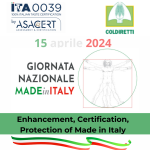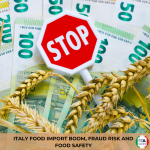February 18th is Global Drink Wine Day: one more opportunity, a legitimate reason, to pour a glass of good wine. The purpose of the day is to spread the love and benefits of wine. After all, wine has always played an important role in history, religion and relationships, even for health, reducing the risk of heart diseases.
Wine and man have shared a common path for several thousand years. Of course, no one knows who was the first to ferment the grapes, but evidence of attempts and experiments in wine production has been found in China, the Middle East and Greece. This suggests that different cultures discovered the process almost simultaneously. The oldest known cellar was found in a cave in Armenia and is more than 4,000 years old; barrels of wine were discovered in the tombs of Egyptian pharaohs, and the ancient Greeks used wine in religious ceremonies.
Although wine has taken on different aspects over the centuries, the process has changed very little in the thousands of years since its invention: the grapes are crushed, pressed and fermented, and the blend is sealed in barrels, aged and then bottled. Using these simple steps, an infinite variety of wines can be created, and different regions of the world are known for the distinct vintages they produce. Factors such as soil, temperature and time influence the way wine grapes grow: two bottles of the same wine belonging to the same vineyard can have a totally different flavour depending on the year in which they were produced, with the result that some vintages become highly demanded and quite expensive.
Today we buy wine both for the pleasure of drinking it and for the collateral and social effect that the label and its cost have. Yet wine, from Homer until a few decades ago, had a different role: drinking wine was first of all an act of culture. Wine represented the innovative element of agricultural activity and the work of winemakers was followed and appreciated equally by both the poor and the wealthiest social classes.
The industrial revolution changed everything, demolishing the association between agriculture and wine. But, after all, the latter remains an agricultural product, the most illustrative factor of what the earth is able to offer us in terms of characteristics and traditions. Just think of the fact that for thousands of years, farmers – aware that for every hundred meters the earth could present enormous differences – have used the characteristics of grapes as guidelines.
The Italian wine sector is not only the one that – in the midst of the Covid-19 pandemic – has suffered the least decline in terms of sales but also the one that will be the first to return to pre-Covid levels by 2022.
2021 was a golden year for Italian wine. A year that saw sales increase both for packaged still wines (+ 15% with peaks of + 20% for reds), and for sparkling wines (+ 20%). In many cases, both between individual denominations and at companies level, the results achieved in 2021 were even better than in 2019. So much so that, according to the Italian Wine Union Observatory, a new record of Italian wine exports will be reached, reaching a share of 7.1 billion euros with a growth of 13% compared to 2020 but 10% higher also compared to 2019. A real boom that does not intend to stop, according to the Wine Report produced by Cross Border Growth Capital, advisor leader in Italy for extraordinary finance operations for startups and SMEs, by 2025 the sector will have an estimated value of 19 billion euros.
Among the best-selling labels, we find both renowned Made in Italy labels such as Brunello di Montalcino which in 2021 exceeded 11 million bottles sold. Among the great Tuscan reds, a good result is also recorded for the Chianti Classico (+ 21% in 2020 and + 11% in 2019) with 35 million bottles exported. Important growth also for Valpolicella wines driven by Amarone (+ 30% in 2020), for Barolo which recorded + 22% in 2020 and Barbaresco (+ 17% in 2020).
Trending topic of the last few days on the Italian web is the question linked to the proposal of the French scientist Serge Hercberg, inventor of the Nutriscore (which we talked about HERE) to assign the label he created also to wine and all alcoholic beverages, adding an “F “(Maximum danger) in black colour.
“An attempt to demonize the consumption of wine and beer through health warnings on the label, as already happened for cigarettes” defined Coldiretti and Filiera Italia. The proposal, however, never made it to the European Parliament.
However, the plenary session on 15 February in Strasbourg put an end to the controversy: the EU Parliament approved the amendments presented by De Castro and Dorfmann to the Beating Cancer Plan UE report, or the European plan to fight cancer, which risked to equate the consumption of wine and alcohol to that of cigarettes.
There is no doubt for scientists that all alcohol-containing beverages carry an oncological risk (deriving from the digestion of ethanol), but moderate consumption of wine, as well as that of red meats, sugar and cheeses, is the basis of the Mediterranean diet, symbol of health and well-being for centuries.
“The European Parliament saves almost ten thousand years of wine history – declares Ettore Prandini, president of Coldiretti – the right commitment of the European Union to protect the health of citizens cannot translate – he stresses -” into simplistic decisions that risk unjustly criminalizing individual products regardless of the quantities consumed. The nutritional balance must be sought between the different foods consumed in the daily diet and certainly not condemning the specific product“.
The EU Parliament has established that it will be necessary to distinguish moderate consumption from abuse, there will be no “health warnings” like on cigarette and tobacco packages, and it will be possible to continue advertising when related to sports activities.
In short, let’s pour a glass and celebrate Global Wine Drink Day without overthinking.






